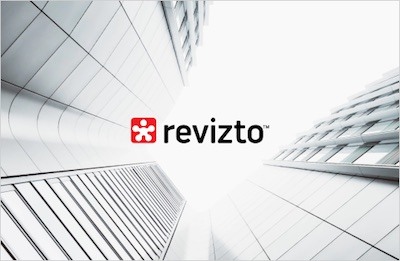A Comprehensive BIM Strategy Document. The Problems with BIM Requirements.

Overview
The increase in popularity of BIM in general has led to many building owners setting BIM requirements in their construction projects. Due to the nature of BIM as a complex process, there are some parts of BIM that are required by a lot of companies, and other ones that are barely ever mentioned.
The main purpose of BIM is to present a new level of collaboration that has massive potential for construction projects in all of their different iterations and stages. Understandably enough, it’s more common for owners to require some parts of BIM, and not the entire process, to be realistic with the demands and the costs for the job.
However, not all of the owners have an in-depth expertise about all of the nuances and pitfalls of BIM. In those cases, it’s recommended to delegate setting up the correct BIM requirements to either architect, BIM coordinator or main contractor.
To help with the understanding of the possible BIM requirements, we have to go over the basics of BIM as a whole.
BIM requirements
While the correct definition of BIM is Building Information Modelling, the definition that is Building Information Model also has a right to exist. After all, BIM is the process and the model that different parties are interacting with. That way, it’s possible to discern specific BIM requirements for both of these definitions.
Modelling requirements are mostly about the effectiveness of the collaboration process between different parties. This part might include topics like data formats, data exchange processes, levels of detail, as well as topics of clash detection, visualisation, design review meetings, issue trackers, and so on.
Some other processes might be included in these requirements, such as the way that specific parties are supposed to communicate with others, and more.
On the other hand, model requirements aim towards the BIM model itself to ensure that every significant phase of the process ends with a comprehensive BIM model that is suitable for everyone to work with, throughout the entire project.
The biggest change of phases is the most obvious – from construction to usage and regular maintenance. In this case, BIM models used in both design and construction are turning into as-built models with asset information to help with the management and maintenance of the facility in question. It’s not uncommon for people to focus on one aspect while neglecting the other one. Both of these are important because requirements for modelling and models are related, just as those two definitions are related on their own.
While it is relatively normal for regular BIM practitioners to think only about a specific project, this becomes far more troublesome if you’re either an owner or a facilities manager. In these cases, you’ll have to start thinking about BIM-supported facility management or even look for ways to implement lifecycle BIM.
Both standardization and customization are important in this particular scenario. Implementing something like a lifecycle BIM depends on all of the phases of the project adding something to the original BIM model, this is the best way for the entire concept of a lifecycle BIM to work in the first place.
Standardization is important because developing all of the BIM requirements from scratch for every project is time- and resource-consuming. The same could be said for some of the specific fields of a construction project, including AEC department, for example. To simplify the process, there is a need for a common standard to serve as a base for each of your different projects.
Customization is no less important, simply because each and every project is unique in its own way, including size, complexity, ambitions, expectations, and so on. Developing a list of case-specific requirements is far easier when you have a template to work in the first place, but it is also no less important to take into account everything that makes the project unique and include it into the BIM requirements in some way.
BIM requirements: problems and recommendations
Since the nature of the project in question is capable of heavily influencing a lot of the recommendations, it’s only possible to give the basic advice about defining your own BIM requirements:
- Incentives and profit sharing are generally recommended, unless both parties completely understand the amount of effort needed to perform the project in question.
- Both parties should understand the requirements completely, this implies that the owner is honest with the requirements and not trying to fool the contractor with some sort of hidden complicated requirement that would be missed. Collaboration heavily depends on the honesty and transparency of all of the participants.
- Generating a decent Asset Information Model beforehand is bound to prove itself beneficial in the long run, and it might also be funded thanks to all of the savings that come from rationalizing your BIM process.
- Keep in mind that the changes are inevitable, and that includes your requirements. The industry is quickly developing, better solutions are being presented, and so on – and both parties should agree to the changes in requirements before including them in the list.
That being said, all of the recommendations are representing a perfect scenario when nothing goes wrong. Unfortunately, the reality is that everyone makes mistakes, and the field of BIM requirements is not an exception. Here are some of the challenges that could be noticed on the modern market in relation to BIM requirements:
- BIM execution plans are transferred from project to project with no changes whatsoever.
- Owners are pushing for the project to begin without having a concrete plan of the said project.
- Owners do not have the correct information about the data that they need, and their solution for that is to ask for everything at once.
- Project templates are used with little to no adjustments and without adding more project-specific information to them.
- Owners rarely trust newer processes, asking for more information without adjusting the original requirements, and having to do double work as a result of that.
Speaking of BIM execution plans, they can also be called BIM strategies, and those are essential for any project’s success. This leads us to the topic of building a successful BIM strategy.
BIM strategy steps
BIM strategy is the organized blueprint for everything that concerns BIM in your organization. As with BIM requirements, the nature of BIM strategy might vary heavily depending on the project’s goal, among other things. That being said, it is possible to discern three main steps that should be included in any BIM strategy document:
- Assessment. Includes organization’s evaluation, both internal and external. Internal evaluation determines the status of the company and external evaluation is looking at the company’s performance on the market. The goal of the evaluation process is to determine which areas can be improved by using new technologies or processes such as BIM. Additionally, individual facilities within the organization can have their own missions to do their job while aiming to enhance their performance through those new technologies or processes.
- Goals and planning. This step begins right after the assessment and is supposed to determine various BIM-related objectives and goals within the organization, as well as the desired level of maturity for each of the planning elements. Establishing goals is important from the organizational standpoint, since that way it’s easier to specify the fields that need to be improved using BIM as the means of improvement. While goals are created for the purpose of completing the mission of the organization, objectives are needed to achieve each one of the goals. Basically, each goal can be split into several different steps that lead to its achievement, and each of these steps is an objective.
- Advancement and implementation. Implementation process is the final part of forming a proper BIM strategy, and it may differ greatly depending on a number of parameters, from the organization’s size to their expertise with BIM. Advancement strategy is also a part of this process, helping the company to determine the correct approach to implement the plan in question without cost escalations, broken deadlines, and such. Additionally, it’s also possible for an organization to benefit from forming a roadmap of the process, to be able to visualise the key components of the plan and the order of their integration.
Following a comprehensive planning procedure that includes multiple steps (as discussed above), it is possible for a project manager to create a BIM strategy document that details the process of BIM integration within the organization.
BIM strategy components
That being said, this is not the only way to approach the subject of creating a comprehensive BIM strategy. A different example of this would be to present the entire BIM strategy as a set of components that it consists of, such as:
- Think through strategic goals. The proposed BIM strategy should be aware of and aligned with the general business strategy of the company, failure to achieve that would result in a disaster of a BIM strategy.
- Explore the subject of stakeholders. It’s not uncommon for clients to have a specific point of view that results in them viewing the entire company from a fixed angle. This is why it’s important to involve more stakeholders into the process since the failure to include even one important stakeholder could easily result in a lot of problems for the company.
- Establish your starting point. Focusing on your destination is important, but forgetting about your starting point could easily be your downfall. Your starting point determines many different factors, including the variety of tools you’ll have access to.
- Ask for different perspectives. It’s essential to have an outsider’s perspective on your strategy. People with different perspectives and backgrounds would be capable of noticing various issues with your strategy, allowing you to sort most of them out before they appear in the first place.
- Visualize the possibilities. Client engagement in the process is crucial, and they tend to be engaged the most on the stage of sketching out the picture of what they want to acquire. Visualization is important for all of the different sides of the strategy.
- Map out the entire process. While the process of mapping out your current processes might seem tedious and boring, it is also essential for the proactive approach to locating potential disruptions before they materialize.
- Strategize your choices. Your choices should be based on objective calculations, and while the trade-offs are often inevitable for some of the parties involved, it’s still possible to make a choice clear enough by establishing the reason for that choice in the first place.
- Layout the roadmap. Often considered an easy process on its own since all you have to do is outline your destination and your starting point – and all of your strategic choices should lead you to solid success in this department.
- Establish proper metrics. Creating appropriate metrics is also an essential part of the process. The organization should also be motivated to actively measure, report and respond to these metrics for the entire system to work and get even better with time.
- Set up a program management office. A correctly set up program management office is essential for any company in the middle of the transformation since this office’s sole role is to drive actual change into the company and not just make a good-looking article from it all leave it at that.
Conclusion
Both BIM requirements and BIM strategy are incredibly important for any organization that works with projects in the construction field. The understanding of BIM requirements is necessary for both parties to understand all of the nuances of the project, and a BIM strategy is important for the proper integration of various BIM processes into the regular life of an organization in question.




